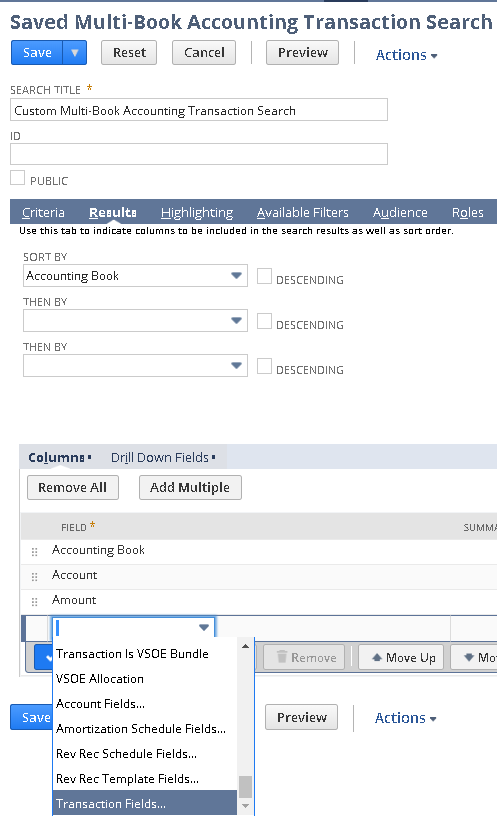In the past couple years, NetSuite’s Multi-Book Accounting (MB) feature has become increasingly popular. Many users are implementing it for its originally intended purpose – as a statutory reporting method, often in other countries and sometimes in other currencies.
However, many users have more recently implemented Multi-Book to comply with the dual-reporting requirements of the new ASC 606 Revenue Recognition accounting standard which recently went into effect. For more information, see our recent blog post.
Regardless of why you’ve implemented Multi-Book, there are some reporting differences that any user of MB should be aware of.
Most users have probably noticed that on most reports, there is now an Accounting Book selector available that works the same as the Subsidiary or Column selectors. It’s important to make sure when running reports that you know which Book’s data is being displayed.
In addition, there are two brand new reports added to the system when Multi-Book is enabled: the Multi-Book Income Statement and Multi-Book Balance Sheet.


These reports are effectively the same as the standard Income Statement and Balance Sheet in structure. However, the addition of Book columns allows you to report on differences between books when you’re running your month-end processes.
NOTE: the difference column will only populate with information when the base currency of both books is the same. If the base currency is not the same, all amounts in the difference column will show as zero like the examples above.
Another thing that changes in a Multi-Book environment is how Saved Searches are used. Once Multi-Book is switched on, you get a new Saved Search node called Multi-Book Accounting Transactions.

Once you have Multi-Book on in your system, I recommend always starting off with this search node rather than the Transactions node if you’re going to pull in any non-Primary book data. I say this for a couple of reasons:
- For non-Primary Book data, sometimes field values are missing in a Transaction search.
- Field values that exist in both a Transaction and Multi-Book Transaction search do not always match. The value in the Multi-Book Transaction node seems to be correct. An example of this I observed was the Posting value being “Yes” in the Multi-Book Transaction node and being “No” in the Transaction node. For that reason, I would always use the Multi-Book Transaction node for criteria when building searches.
The Multi-Book Accounting Transaction search does contain a join to the Transaction node (below), something you will probably need to utilize as you build searches. This does make it more difficult to join to other nodes, but hopefully that limitation will be fixed with the Next Generation Analytics reporting announced at Suiteworld. Learn more about major SuiteWorld18 announcements in this post.

For further Multi-Book search tips, check out my post on NetSuite Multi-Book Searches on Amortization and Rev Rec Schedules. We have a client who implemented multi-book as part of their ASC 606 adoption. There’s a video about it here.
For more information on this topic or others related to NetSuite, contact RSM at erp@rsmus.com or by phone at 855.437.7202.
By: Ryan Meyer

 RSMUS.com
RSMUS.com